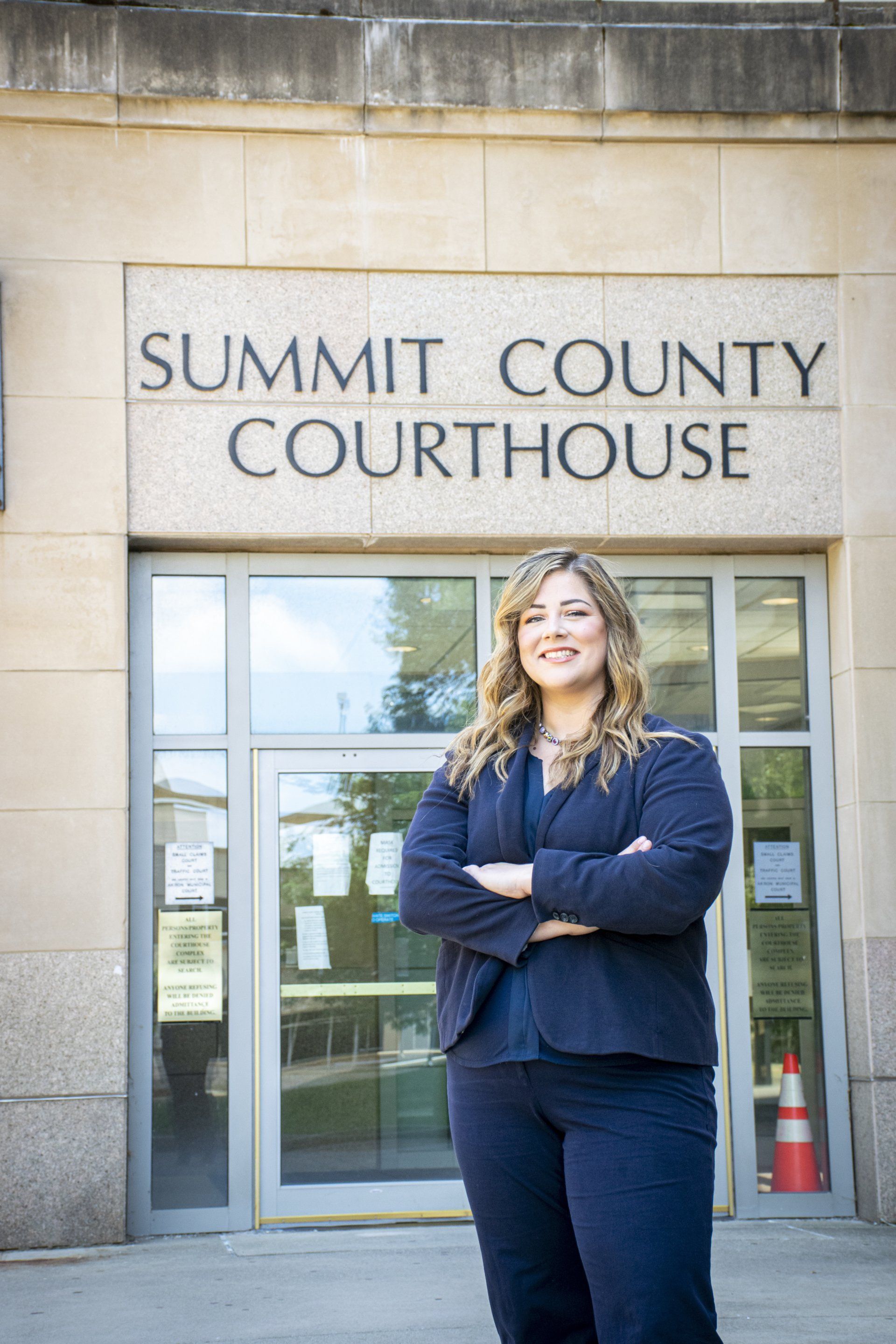Felony Sentencing – Just Punishment, Sentencing Disparities and Equal Protection under the Law
“The overriding purposes of felony sentencing are to protect the public from future crime by the offender and others, to punish the offender, and to promote the effective rehabilitation of the offender using the minimum sanctions that the court determines accomplish those purposes without imposing an unnecessary burden on state or local government resources. To achieve those purposes, the sentencing court shall consider the need for incapacitating the offender, deterring the offender and others from future crime, rehabilitating the offender, and making restitution to the victim of the offense, the public, or both.” See
ORC 2929.11(A).
The trial court considers a number of factors in deciding the severity of a given sentence, including: (1) The physical or mental injury suffered by the victim of the offense due to the conduct of the offender was exacerbated because of the physical or mental condition or age of the victim;
(2) The victim of the offense suffered serious physical, psychological, or economic harm as a result of the offense;(3) The offender held a public office or position of trust in the community, and the offense related to that office or position; (4) The offender’s occupation, elected office, or profession obliged the offender to prevent the offense or bring others committing it to justice; (5) The offender’s professional reputation or occupation, elected office, or profession was used to facilitate the offense or is likely to influence the future conduct of others; (6) The offender’s relationship with the victim facilitated the offense; (7) The offender committed the offense for hire or as a part of an organized criminal activity; (8) In committing the offense, the offender was motivated by prejudice based on race, ethnic background, gender, sexual orientation, or religion; (9) If the offense is a violation of section 2919.25 or a violation of section 2903.11, 2903.12, or 2903.13 of the Revised Code involving a person who was a family or household member at the time of the violation, the offender committed the offense in the vicinity of one or more children who are not victims of the offense, and the offender or the victim of the offense is a parent, guardian, custodian, or person in loco parentis of one or more of those children. See ORC 2929.12(B).
"It is well-established that the Equal Protection Clauses of both the Ohio and United States Constitutions protect 'similarly situated' persons from being treated differently by the government." [Murphy at ¶ 8, citing State ex rel. Riter]. "[I]t is a basic and generally applicable principle of Fourteenth Amendment equal protection analysis that a party claiming an equal protection violation has the burden of proving purposeful discrimination."[1] "A corollary to this principle is that a criminal defendant must prove that the purposeful discrimination 'had a discriminatory effect' on him."[2]
Federal law provides, Under 18 U.S.C. § 3553(a), the district court is required to impose a sentence that is "sufficient, but not greater than necessary to comply with the purposes" of sentencing, including "reflect[ing] the seriousness of the offense, [ ] promot[ing] respect for the law, . . . provid[ing] just punishment[,]" deterring criminal conduct, and protecting the public. One of the key factors courts must consider is "the need to avoid unwarranted sentence disparities among defendants with similar records who have been found guilty of similar conduct[.]" 18 U.S.C. § 3553(a)(6). However, this provision concerns national disparities between similarly situated defendants, not disparities among co-defendants. See United States v. Conatser, 514 F.3d 508, 521 (6th Cir. 2008); United States v. Richardson, 2024 U.S. App. LEXIS 29428, *8, 2024 FED App. 0457N (6th Cir.)
Against this backdrop of stated purposes of sentencing and the factors to be considered, there have been an increase in charges arising from the sale of heroin laced with fentanyl, in which the victim suffers a fatal overdose resulting in charges of involuntary manslaughter against the drug dealer. These charges of involuntary manslaughter have brought a wide disparity of sentences in Ohio. Some offenders have received sentences ranging from five to nine years." See State v. Alspaugh, 12th Dist. Preble No. CA2017-09-011, 2018-Ohio-801, ¶ 2, 5 (the defendant "provided a lethal dose of heroin to the victim, * * * causing her to overdose and die," pleaded guilty to involuntary manslaughter and aggravated trafficking, and was sentenced to an aggregate five-year prison term); State v. Theodorou, 8th Dist. Cuyahoga No. 105630, 2017-Ohio-9171, ¶ 2-4 (defendant, who "sold heroin laced with fentanyl to his friend * * *, who subsequently died from an overdose," pleaded guilty to involuntary manslaughter, corrupting another with drugs, trafficking, drug possession, and possessing criminal tools, and was sentenced to a five-year prison term)3; State v. Veley, 6th Dist. Lucas No. L-16-1038, 2017-Ohio-9064, ¶ 2, 18 (trial court sentenced the defendant to five years for involuntary manslaughter after evidence at trial revealed that the defendant sold the minor victim heroin laced with fentanyl); State v. Walker, 8th Dist. Cuyahoga No. 102960, 2016-Ohio-395, ¶ 1 (trial court ordered that the defendant's three-year prison term for involuntary manslaughter be served consecutive to his two-year prison term for his conviction for attempted corruption of another with drugs, giving the defendant an aggregate prison term of five years.).
Other offenders have received far more lengthy sentences: State v. Potee, 12th Dist. Clermont No. CA2016-06-045, 2017-Ohio-2926, 90 N.E.3d 58, ¶ 13 (defendant found guilty of involuntary manslaughter, two counts of corrupting another with drugs, and trafficking — sentenced to prison for 15 and one-half years); State v. Montanez-Roldon, 8th Dist. Cuyahoga No. 103509, 2016-Ohio-3062, ¶ 9 (defendant was sentenced to ten years after "providing the victim with tainted drugs leading to the victim's death"); State v. Zusman, 11th Dist. Lake No. 2014-L-087, 2015-Ohio-3218, ¶ 1, 3 (defendant found guilty of involuntary manslaughter, corrupting another with drugs, trafficking, tampering with evidence, and possessing criminal tools — sentenced to 12 and one-half years in prison). State v. Terrell, 2018-Ohio-5353, P13-P14, 2018 Ohio App. LEXIS 5677, *5-7
This vast disparity of sentences requires an analysis of the criminal history of the offender and the sentencing factors discussed above. The work regarding the determination of a felony sentence has to be done, in large part, before the trial court, as the appeal of felony sentences has become limited and restricted by statutory enactments and decisional law. As Justice Brunner Concurring in State v. Toles wrote: “in Jones we simply observed that R.C. 2953.08, as amended, precludes second-guessing a sentence imposed by a trial court based on its weighing of the considerations in R.C. 2929.11 and 2929.12. See also State v. Patrick, 164 Ohio St.3d 309, 2020-Ohio-6803, 172 N.E.3d 952, ¶ 15-22 (R.C. 2953.08 is not the only basis for appealing a sentence and it does not preclude an appeal of a sentence on constitutional grounds); Jones at ¶ 48-49 (Fischer, J., concurring) (an appellate court may review the trial court's findings under R.C. 2929.11 and 2929.12 for "certain limited purposes," including whether the sentence was "based on an offender's 'race, ethnic background, gender, or religion' "); R.C. 2953.08(F) (requiring an appellate court to review essentially the entire trial-court record in evaluating the legality of a sentence).” State v. Toles, 166 Ohio St. 3d 397, 401, 2021-Ohio-3531, P10, 186 N.E.3d 784, 787, 2021 Ohio LEXIS 1961, *8-9, 2021 WL 4516062.
The restrictions to appellate review were expressed by Justice Donnelly in his Dissenting Opinion in Toles: I thought Jones was "the final nail in the coffin, the death knell for meaningful appellate review" of criminal felony sentencing. Id. at ¶ 50 (Donnelly, J., dissenting). It turns out I was wrong, for the majority appears to have set aside a few more nails for today's case. The issue here was whether R.C. 2953.08(G)(2) allows appellate courts to review specific sentencing findings made by the trial court under R.C. 2929.11 and 2929.12 when those findings are allegedly not supported by the record. By summarily affirming the court of appeals' judgment and effectively answering that question in the negative, the majority has foreclosed any possibility for a criminal defendant to obtain appellate review of mistaken, if not malicious, sentencing errors, leaving trial courts wholly free to impose sentences without any constraints whatsoever.” State v. Toles, 166 Ohio St. 3d 397, 404, 2021-Ohio-3531, P20, 186 N.E.3d 784, 789, 2021 Ohio LEXIS 1961, *14, 2021 WL 4516062
So, if your charged with a felony, you will need to mount a strong defense before the trial court, as the appellate review of your sentence will be limited.
[1]
State v. Keene, 81 Ohio St.3d 646, 654, 1998- Ohio 342, 693 N.E.2d 246 (1998), citing McCleskey v. Kemp, 481 U.S. 279, 292, 107 S. Ct. 1756, 95 L. Ed. 2d 262 (1987), quoting Whitus v. Georgia, 385 U.S. 545, 550, 87 S.Ct. 643, 17 L. Ed. 2d 599 (1967).
[2] McCleskey at 292, quoting Wayte v. United States, 470 U.S. 598, 608, 105 S.Ct. 1524, 84 L. Ed. 2d 547 (1985); State v. Ramey, 2021-Ohio-1522, P25, 2021 Ohio App. LEXIS 1490, *17.










